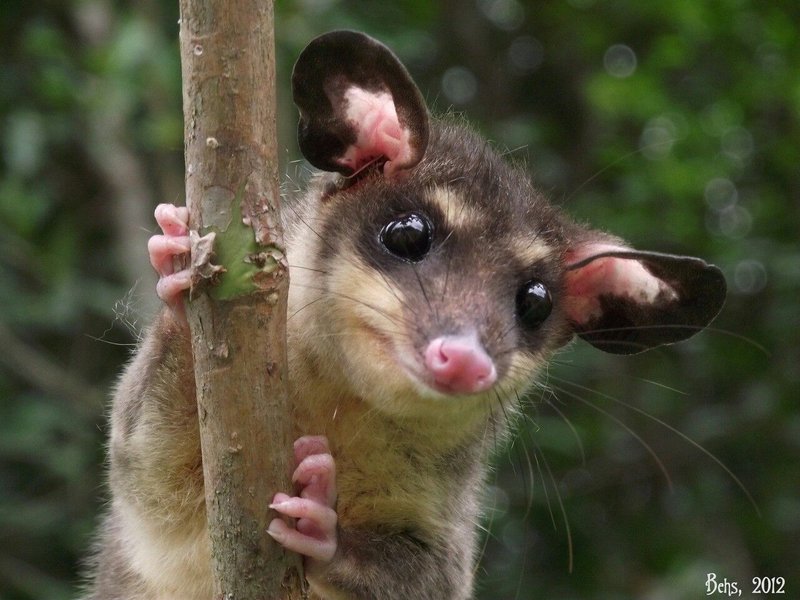
Now, you might be wondering what to do if you actually come across one of these critters. After all, wildlife encounters can be thrilling but also a bit nerve-wracking! Should you approach it? Should you back off? Let’s dive into everything you need to know about handling such a special encounter safely and respectfully.
Understanding the Yapok: A Quick Overview
Yapoks are semi-aquatic marsupials that thrive in watery habitats, like rivers and wetlands. They’re mostly nocturnal, which means you’re more likely to see one at night. Imagine a furry little swimmer, complete with a long tail that helps it navigate through water effortlessly. It may look like a regular opossum at first glance, but yapoks have their unique adaptations. They have webbed feet, which make them excellent at swimming.
But why should you care about what to do if you encounter a yapok? For starters, these animals contribute to their ecosystems by helping control insect populations and serving as prey for larger predators. Understanding how to interact with them is crucial for both your safety and their well-being.
Stay Calm and Observe From a Distance
If you spot a yapok, the first thing to remember is to stay calm. These little creatures can be skittish, and sudden movements might scare them away. Instead of approaching it directly, take a moment to watch from a safe distance. You might notice its adorable features—big eyes, a soft coat, and that characteristic tail.
Observing wildlife can be an enriching experience. It allows you to appreciate their behavior and understand their role in the environment. Take this time to grab your binoculars or camera if you have them, but make sure you’re not getting too close. The general rule is to stay at least 25 feet away. This distance keeps both you and the yapok safe.
Avoid Feeding Wild Animals
You might think it would be delightful to lure the yapok in with some tasty treats, but feeding wild animals is usually a bad idea. For one, it can disrupt their natural behavior and diet. Yapoks, like many wild animals, are experts at finding food sources in their natural habitats. Providing them with human food can lead to health issues and dependency.
Using your curiosity to observe their natural feeding behaviors can be much more rewarding! If you’re interested in what they eat, you’ll find that yapoks primarily dine on insects, small fish, and crustaceans. They are perfectly capable of finding their own food without your help.
Keep Your Distance If It Feels Threatened
If you notice the yapok becoming defensive—like flattening its ears back or hissing—it’s best to give it some space. Just like us, animals can feel threatened and may react in unexpected ways. Remember, a scared yapok isn’t just cute; it’s also capable of aggression if it feels cornered.
Here’s the thing: staying calm and respectful of their space ensures both you and the animal remain safe. Slowly back away and give it time to feel secure again. Once it’s comfortable, it will likely resume its activities. You’ll have a much more enjoyable encounter this way!
Document Your Encounter—Ethically
If you’re a nature lover or a budding wildlife photographer, documenting your encounter with a yapok can be exciting! However, ensure you do it ethically. Taking photos or recording videos from a distance is a great way to capture the moment without causing stress to the animal. Use a zoom lens if you have one, and avoid using flash photography, which can frighten them.
Documenting your wildlife adventure can contribute to citizen science efforts, as well. Many organizations encourage people to submit sightings and photos to help researchers track animal populations and behaviors. Just remember to follow any local guidelines regarding wildlife photography.
Respecting Their Habitat
When you encounter a yapok, you’re stepping into its home. It’s essential to respect its habitat by minimizing your impact. Avoid trampling through vegetation or disturbing the area where the yapok is living. This not only helps the yapok but also protects other wildlife and the broader ecosystem.
If you’re hiking or exploring, stick to established paths and trails. This practice helps preserve natural habitats for all creatures, including the yapok. You might be surprised at how beautiful and diverse wildlife can be if we give them the space they need to thrive!
What to Do If You See a Injured Yapok
In the unfortunate event that you come across an injured yapok, it’s important to know how to respond. First, assess the situation from a distance, just like you would with a healthy yapok. If it’s clear the animal needs help, contact local wildlife authorities or a rehabilitation center. They have the expertise to assist animals safely and effectively.
Never attempt to handle the animal yourself. Wild animals can carry diseases and may react unpredictably when scared or in pain. It’s best to leave it to professionals who know how to care for wildlife and can provide the yapok with the medical attention it needs.
Final Thoughts: Celebrating Your Encounter
Encountering a yapok in the wild can be a magical experience. Whether you’re observing them from a distance or documenting the moment, it’s a reminder of the beauty of nature and its inhabitants. Remember to stay calm, respect their space, and appreciate the privilege of witnessing a creature like this in its natural habitat.
Ultimately, each wildlife encounter is a chance to learn and grow our appreciation for nature. Keep these tips in mind, and you’ll not only have a wonderful experience but also contribute to the well-being of the animals we share our planet with. So the next time you find yourself wandering through a watery wilderness, keep an eye out for those adorable yapoks. You never know what kind of adventure awaits!

